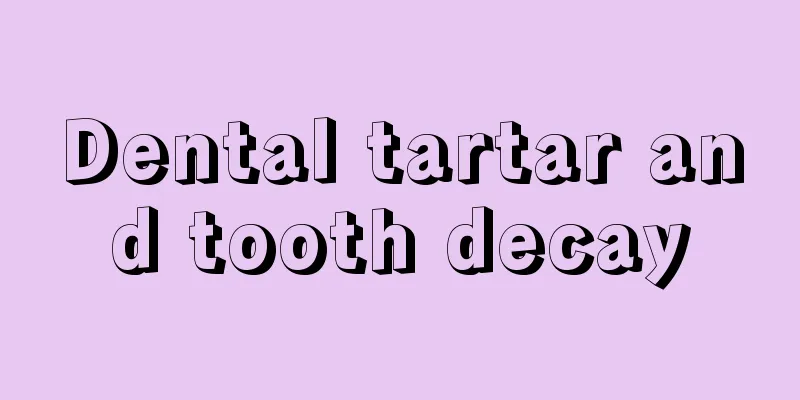Dental tartar and tooth decay

|
The appearance of dental plaque does not actually mean that there will be tooth decay. The two are actually not that closely related. The formation of dental tartar usually occurs on the teeth at the opening of the salivary glands, while tooth decay mainly occurs in the pits and fissures or adjacent surfaces of the teeth. It is recommended that friends with oral diseases should have regular oral examinations and learn more about their oral health. The locations and causes of dental calculus and caries are different. Tartar forms on the surface of teeth near the openings of the salivary glands. The formation of dental tartar is related to the carbon dioxide concentration, acid-base value, and saliva concentration in saliva. Dental caries mainly occurs in the pits and fissures, proximal surfaces and tooth necks. The occurrence of dental caries is related to factors such as bacteria, food, saliva, teeth, and time. The clinical symptoms of dental calculus and caries are also different. The teeth of people with tartar appear yellow or brown. Some patients may have black calculus on their teeth. Dental tartar will constantly stimulate the periodontal tissue, compress the gums, affect blood circulation, cause bacterial infection of the periodontal tissue, cause inflammation and atrophy of the gums, and form periodontal pockets. Caries cause changes in color, shape, and texture. Dental caries can be divided into three stages: shallow, moderate and deep caries. Symptoms vary at different stages. The treatments for dental plaque and caries are also different. The harm caused by dental tartar is relatively small. Tartar does not require treatment. Brushing your teeth in the morning and evening, rinsing your mouth after meals, eating a balanced diet, and washing your teeth are the most important measures to prevent and treat tartar formation. Dental caries is more serious. The methods for treating dental caries include drug therapy, silver-mercury alloy filling, composite resin filling, acid-etched photosensitive composite resin filling, inlays, etc. The above is the difference between dental calculus and caries. Although the clinical symptoms of dental tartar and caries are similar, they are two completely different diseases. Whether it is dental tartar or caries, if not treated in time, the tooth pain will become more severe. Therefore, dental tartar and caries must be treated promptly. |
<<: What is dental calculus_How is dental calculus formed
>>: What to do about dental calculus and gum recession
Recommend
Iliotibial band syndrome quick recovery
People who like sports or who are not careful dur...
Why do I feel particularly hungry during my period
Everyone has the same eating habits for three mea...
What can be used instead of five-spice powder
Five-spice powder is a very common condiment on t...
How to provide good postoperative care for hamartoma
Although there are many causes of hamartoma, each...
What to do if your teeth are calcium deficient?
If your teeth are calcium deficient, you should o...
What are the main symptoms of lung cancer in the late stage?
What are the obvious manifestations of advanced l...
Kidney-warming and aphrodisiac medicine
Most people in life often suffer from kidney defi...
Uncovering 10 Things the Human Body Does Every Day
The Popular Health Network recently published an ...
What to do if your throat becomes very dry after radiotherapy for nasopharyngeal carcinoma
What should I do if my throat becomes very dry af...
Can patients with colorectal cancer do strenuous exercise?
After patients are diagnosed with colorectal canc...
How to peel shrimp tails
When the crayfish production season arrives, it i...
Are meridians blood vessels?
Strictly speaking, meridians are not blood vessel...
Analysis of the three main breast cancer treatment methods
Breast cancer is a tumor disease that may lead to...
What causes a hard lump on the back of my hand?
The role of hands is so important. Hands can do s...
Which foods can prevent lung cancer? Eating more of this can prevent lung cancer
Lung cancer must be discovered and treated early,...









